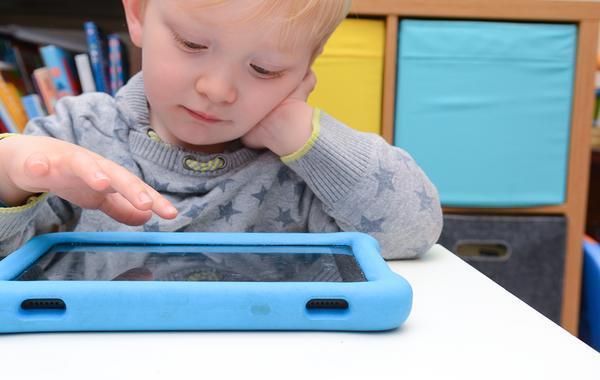
The Guidelines, Explained
The WHO guidelines aren’t really about screens. Instead they’re about overall patterns of behavior. The WHO is concerned less about screen time than kids being inactive for long periods of time. It also recommends that infants and toddlers not be any sort of restraints (like a stroller or high chair) for more than an hour at a time and that they sleep for more than half the day. In fact, screens themselves are rarely mentioned in any form in the 36 page document, and the WHO doesn’t even recommend a ban for screens for infants, simply saying “Screen time is not recommended.”
Of course these guidelines open a new can of worms for parents in other ways. Ask any new parent how likely a baby is to actually get sixteen hours of sleep. But in terms of screens, it aligns far more with actual common sense and gives parents far more leeway. The question is how to make use of it.

Keeping Screen Time To A Healthy Level
Be An Example: Children, consciously or not, imitate their parents, and the media coverage of these guidelines reflects our own anxiety about screen use. So, work to set an example for your kids; use screens less, and they’ll do the same.
Set Limits: Have a timer of overall screen time that all screens fit into. TV, phones, video games, and the rest should be timed out, and once the limit is reached, that’s it. Parental control apps can help you track time and enforce the rules.
Work Out Schedules: Children can have surprisingly busy lives, especially once they’re going to school. Build a schedule where they fit everything in, and use it as a teaching opportunity to show them how to plan their own time. Be sure to leave unstructured time as needed, and remember parental control apps can help keep schedules in place by locking certain apps.
Give Them Jobs: For kids capable of doing chores and engaging their mind in other ways, give them things to do around the house. One effective tool is to tie chores to screen time; some parents “pay” kids for chores with screen time on the clock, while others simply set the rule that no screens are turned on until the toys are put away and the mess cleaned up.
Give Them Options: Have books, toys, interactive activities, and other fun and stimulating things around the house. The WHO guidelines in fact suggest that kids who are actively engaging their minds while sedentary are just fine.
Parents know all too well how eager people are to judge their choices. But it’s important to understand the nuances behind what health authorities and other experts are suggesting, and to seek help where you need it. To learn more about Screen Time and parental control apps, we invite you to try it for free.

Join the conversation